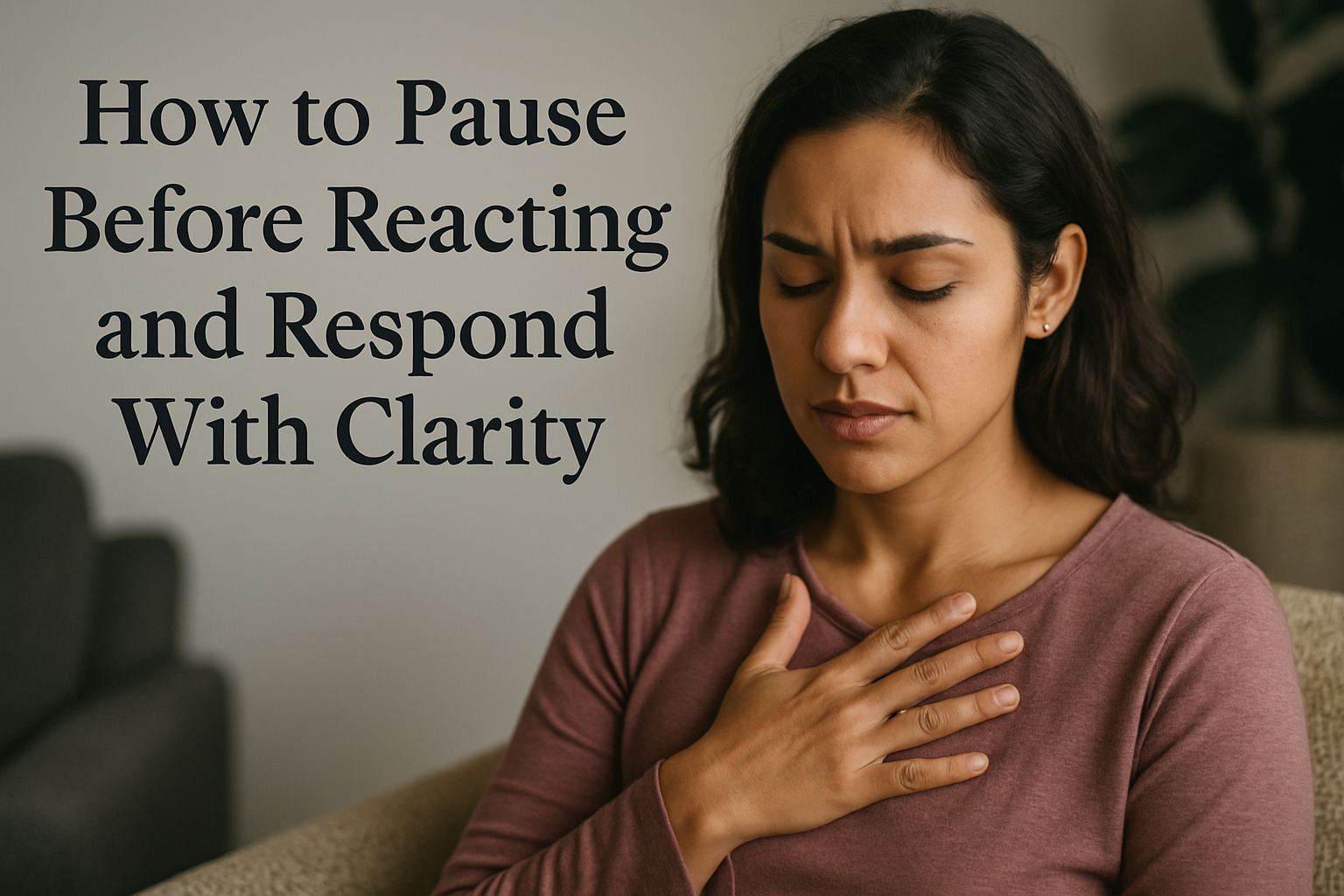In moments of stress, frustration, or emotional discomfort, it’s natural to react quickly. You might say something you regret, shut down, or make a rushed decision. But reactivity often leads to disconnection — from others and from yourself. Learning to pause before reacting is a powerful emotional skill that allows you to respond instead of react. It helps you bring clarity, empathy, and intention to situations, even when emotions run high.
Why We React Impulsively
Reactivity is rooted in your nervous system. When something feels threatening — emotionally or physically — your brain switches to survival mode: fight, flight, or freeze. This can lead to:
- Snapping at others
- Saying yes when you mean no
- Avoiding conflict entirely
- Making fast decisions without reflection
These reactions aren’t weaknesses. They’re protective — but not always helpful in modern life.
The Power of the Pause
A pause is the moment between stimulus and response. It’s the space where you can:
- Take a breath
- Check in with how you feel
- Remember your values
- Choose your next step thoughtfully
In that brief moment, everything can change — not just your words, but your relationships, your self-respect, and your peace.
Step 1: Notice the Signs
Learn to recognize when you’re about to react:
- Tight chest or clenched jaw
- Sudden surge of emotion
- Racing thoughts or urge to interrupt
- Feeling “on edge” or trapped
These physical cues are your invitation to pause.
Step 2: Breathe Before You Speak or Act
Just one conscious breath can calm your nervous system and create space for clarity. Try:
- Inhale through your nose for 4 seconds
- Hold for 2 seconds
- Exhale slowly through your mouth for 6 seconds
Repeat once or twice before continuing.
Step 3: Ask Yourself Grounding Questions
In the pause, check in:
- “What am I really feeling right now?”
- “What’s the outcome I truly want here?”
- “Is this about now, or something deeper?”
- “Will this response align with my values?”
These questions reconnect you with your wiser self.
Step 4: Use Grounding Techniques
If the emotion is strong, bring yourself back to the present:
- Press your feet into the ground
- Touch something cold or textured
- Look around and name 3 things you see
- Place your hand on your heart
Grounding brings the body out of reactivity and into safety.
Step 5: Delay the Response, If Needed
You don’t have to respond right away. Try saying:
- “Can I take a moment before I respond?”
- “Let me think about that and get back to you.”
- “I need a pause before continuing this conversation.”
This protects your energy and gives your brain time to regulate.
Step 6: Respond With Intention
After the pause, choose a response that reflects clarity instead of impulse. You might:
- Set a boundary calmly
- Express how you feel using “I” statements
- Ask a question instead of assuming
- Simply choose silence if that feels safer
Your power is not in what happens — it’s in how you respond.
Step 7: Reflect Afterward
Even if you didn’t pause in time, reflect later:
- “What triggered that reaction?”
- “What would I do differently next time?”
- “What can I learn about myself from this?”
This reflection builds emotional resilience and self-trust.
Final Thought: The Pause Is Your Power
You are not defined by your reactions — you are defined by your ability to return to presence. The pause gives you choice. It honors your emotions without letting them take over. With practice, you’ll discover that even in the heat of the moment, you have the power to stay grounded, connected, and clear. That’s emotional maturity. That’s peace in motion.
